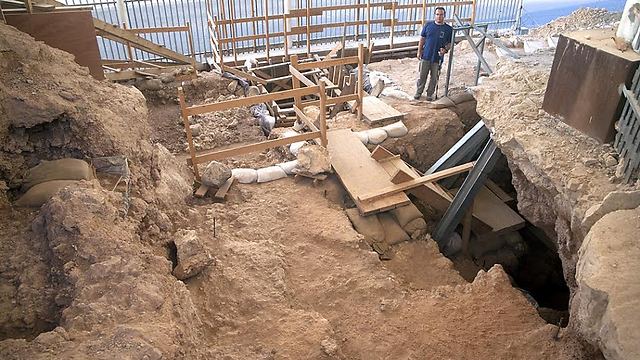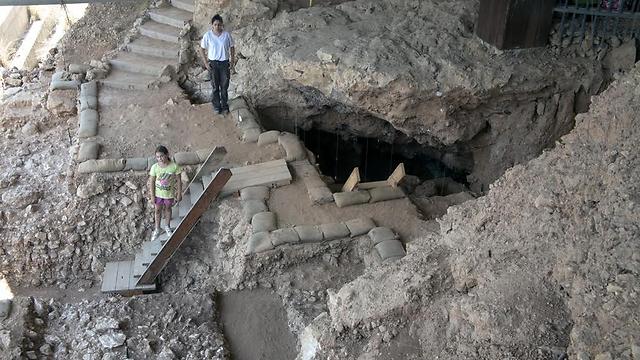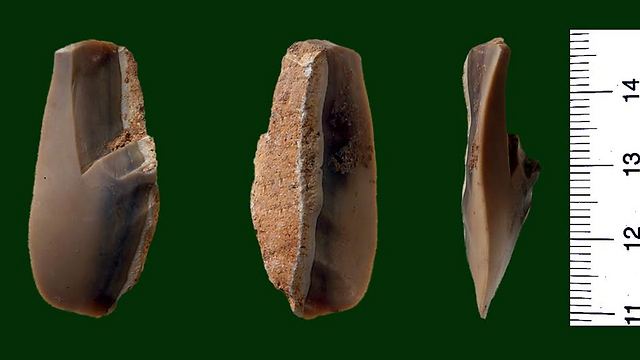Located outside of Rosh HaAyin and Tel Aviv, Qesem Cave was accidentally discovered during road work 16 years ago; since then, the cave has revealed a wealth of information on early humans, and helps shed light on the evolution of humanity.
When work began to widen route 5 outside of Rosh HaAyin 16 years ago, workers discovered something incredible; the opening to a world frozen in time.
A powerful controlled explosion designed to demolish a giant limestone boulder blocking the path of the road exposed the entrance to a giant limestone cave which had been sealed for over 200,000 years.
This 200,000 year old time capsule contained within it rare artifacts from a critical point in the evolution of humanity, and turned the cave, now called “Qesem Cave,” into one of the most important pre-historic sites in the world.
Archaeology Professor at Tel Aviv University Ron Barkai is the head of digging at Qesem Cave. He discussed the international significance of the finds found there.

“It’s a very special cave,” he said. “It reflects an unknown stage in the history of humanity. We don’t know which type of human lived here. We know that they acted differently than everyone else who lived in this area before them. They seem like a different type of human. They didn’t just behave differently, but they also looked differently. If we aren’t mistaken, they were more similar to us ( humans today), and not their forefathers the Homo erectus.
Avi Gofer, another archaeologist from Tel Aviv University and who also helps manage the dig excitedly talks discusses the artifacts left behind by these early peoples, including flint tools and animal bones.
“This cave has been unusually well preserved,” Gofer says. “The people who lived here were a huge revolution (in the history of humanity). What these people did here is completely different than what other humans were doing; in terms of chiseling technology, behavior, hunting techniques, organization, use of fire, and much more. In other words, there was an explosion of change (at Qesem Cave), and a lot of innovations.”
One of the major discoveries at Qesem Cave which changed history books was the discovery of the oldest evidence of the consumption of cooked meat.

Professor Torsten Otmeier of the University of Erlangen-Nuremberg, Germany, comes with his students to help excavate in the cave every year and spoke about some of his findings.
“This site is approximately 400,000 years old. If you look at what (the early humans) did here, on their hunting strategies, the way they made their tools and how they prepared their food, it points to one of the most important changes in the history of mankind. Before this era, early humans acted in a completely different manner. (This site) represents one of the most important turning points in the evolution of mankind.”
Despite the heat and the harsh and sometimes dangerous physical labor, diggers who come from all over the world work diligently and with scientific precision as they sift dirt, sand, and limestone in the cave. A long conveyor belt brings dirt up from the depths of the cave to the surface, where the dirt is sifted for artifacts.

Professor Barkai explains the technological differences between Homo erectus and the type of humans whose remains were found in the cave.
“They made flint knives alongside other large artifacts such as hand axes which enabled these early peoples to hold onto the tool with one hand and cut. These are the oldest examples of knives in the history of humanity,” he said.
“By comparison,” he continues, “Europe only started seeing humans using knives 30,000 years ago. These knives were created 400,000 years ago. What happened here in Israel 400,000 years ago predates the rest of the world by hundreds of thousands of years. In the millions of years prior, there is no evidence of burnt bones (which suggest cooking). It seems these people ate cooked meat, meaning that Qesem Cave has evidence of the oldest barbeque ever held.”
As reported by Ynetnews
